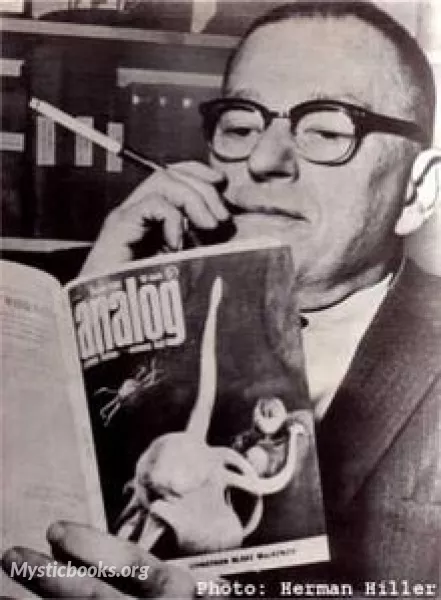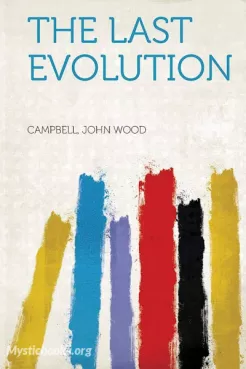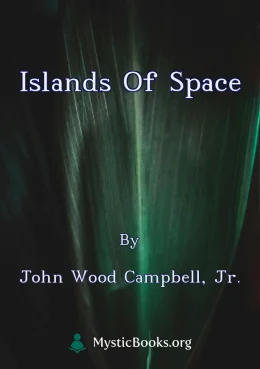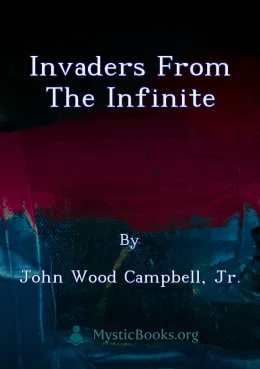
Timeline
Title
Country/Nationality
John Wood Campbell, Jr.
Introduction:
John Wood Campbell Jr., a renowned American science fiction writer and editor, left an indelible mark on the genre during the 20th century. With his visionary ideas, literary principles, and groundbreaking works, Campbell revolutionized science fiction, elevating it to new heights. This essay explores the life, principles, notable works, and lasting legacy of John W. Campbell Jr.
Who was John Wood Campbell Jr.?
John Wood Campbell Jr., born on June 8, 1910, was an influential figure in the world of science fiction. He grew up in New Jersey, and from an early age, showed a passion for reading and writing. Campbell's keen interest in science, coupled with his vivid imagination, led him to pursue a career in science fiction.
Principles and Philosophy:
Campbell had a distinct vision for the genre, emphasizing scientific accuracy and thought-provoking concepts. He believed that science fiction should not only entertain but also challenge readers' perceptions of the world. Campbell's stories often incorporated scientific principles and explored the consequences of technological advancements, encouraging readers to contemplate the future and humanity's place in it.
Notable Works:
John W. Campbell Jr.'s body of work includes numerous groundbreaking stories and novels. Among his most notable works is the novella "Who Goes There?" (1938), which later served as the basis for the classic movie "The Thing" (1982). The story revolves around a group of scientists in Antarctica who discover an alien life form that can imitate any living creature. Campbell's meticulous attention to scientific detail and suspenseful storytelling made "Who Goes There?" a defining work of the genre.
Campbell's other notable works include "The Black Star Passes" (1930), "The Ultimate Weapon" (1936), and "The Mightiest Machine" (1934). He also wrote under the pseudonym Don A. Stuart, with stories such as "Twilight" (1934) and "Cloak of Aesir" (1952) showcasing his versatility as a writer.
Campbell as an Editor:
Apart from his writing, Campbell made significant contributions as an editor. In 1937, he became the editor of Astounding Science Fiction magazine (later renamed Analog Science Fiction and Fact), where he shaped the direction of the genre for over three decades. Under his editorial guidance, Astounding published works by legendary authors like Isaac Asimov, Robert A. Heinlein, and Arthur C. Clarke, among others.
Campbell encouraged his writers to push the boundaries of science fiction, insisting on scientific rigor and engaging storytelling. His editorial leadership played a crucial role in fostering the "Golden Age of Science Fiction" and establishing a new standard of excellence in the field.
Legacy and Remembrance:
John W. Campbell Jr.'s influence on science fiction is immeasurable. His emphasis on scientific plausibility and thoughtful exploration of ideas shaped the genre, inspiring countless authors and readers alike. Campbell's impact extended beyond his writing and editing; he created a platform that nurtured talent and provided a space for groundbreaking ideas.
Sadly, Campbell passed away on July 11, 1971. However, his legacy endures, and he is remembered as a visionary writer and editor who revolutionized science fiction. His contributions to the genre were recognized posthumously when the Science Fiction Writers of America renamed the annual award for best new writer as the John W. Campbell Award for Best New Writer in his honor.
Interesting Facts:
- Campbell was an early proponent of the concept of the "superiority of the unknown." He believed that humanity's curiosity and exploration of the unknown would lead to progress and enlightenment.
- He published some of the earliest works
Books by John Wood Campbell, Jr.

The Last Evolution
It takes readers on a profound journey through time and evolution. Written in 1932, this timeless work of speculative fiction explores humanity's place in the universe, the potential consequences of progress, and the existential questions raised by t...

Ultimate Weapon
In a future where humanity's technological prowess is limited, a powerful alien race called the Mirans sets their sights on Earth, aiming to conquer and colonize our planet. Their technologically advanced armada surpasses anything humanity has ever s...

Black Star Passes
Black Star Passes is a classic science fiction novel that follows the adventures of a team of scientist-astronauts as they encounter extraterrestrial threats and navigate a dangerous universe. Led by the brilliant Arcot, Wade, and Morey, the team fac...

Islands of Space
In 'Islands of Space,' a group of Earth scientists embark on a daring interstellar voyage aboard a vessel capable of exceeding the speed of light. Their journey takes them into the vast expanse between galaxies, where they encounter unexpected challe...

Invaders from the Infinite
In a future where humanity has ventured into the vast reaches of space, a relentless alien race known as the Thessians emerges as a formidable threat. The Earth's most brilliant minds, the scientific trio of Arcot, Wade, and Morey, are tasked with de...